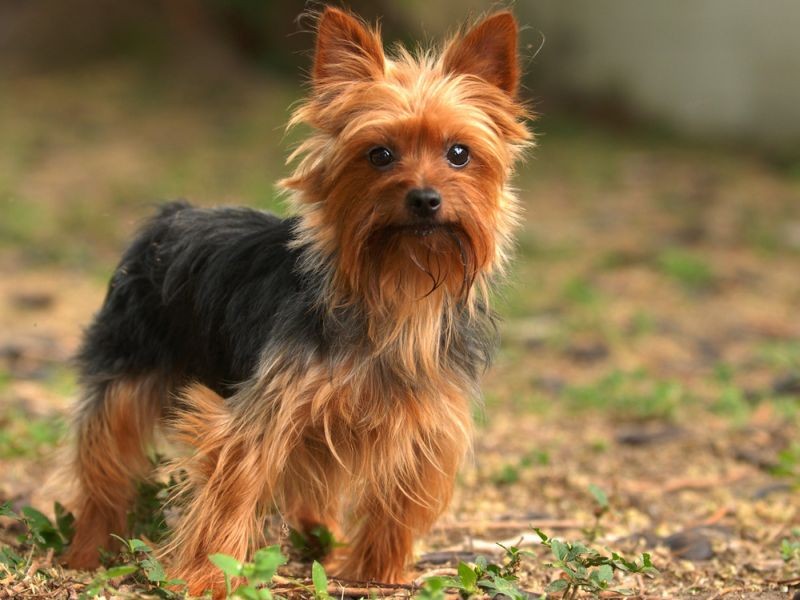
Yorkshire Terrier

Navigate through the tabs
Navigate through the tabs below to view the breed's info of your interest.
The breed's info is divided in four sections; namely:
the breed's history ,
the breed's main stats ,
the dog's potential health issues
and finally, how the breed scored in 26 different categories.
All the above information should give you a respectively good overview for the dog of your interest.
Dog Breed's Main Info
The Breed's History:
During the Industrial Revolution in England, Scottish workers came to Yorkshire to work in the coal mines, textile mills, and factories, bringing with them a dog known as a Clydesdale Terrier or Paisley Terrier. These dogs were much larger than the Yorkshire Terrier we know today, and it's thought that they were used primarily to catch rats in the mills.
The Clydesdale Terriers were probably crossed with other types of terrier, perhaps the English Black and Tan Toy Terrier and the Skye Terrier. The Waterside Terrier may also have contributed to the development of the Yorkshire Terrier. This was a small dog with a long blue-gray coat.
In 1861, a Yorkshire Terrier was shown in a bench show as a "broken-haired Scotch Terrier". A dog named Huddersfield Ben, born in 1865, became a popular show dog and is considered to be the father of the modern Yorkshire Terrier. The breed acquired that name in 1870 because that's where most of its development had taken place.
Yorkshire Terriers were first registered in the British Kennel Club stud book in 1874. The first Yorkshire Terrier breed club in England was formed in 1898.
The earliest record of a Yorkshire Terrier being born in the U.S. was in 1872. Yorkshire Terriers were able to compete in dog shows as early as 1878. In those early shows, Yorkshire Terriers classes were divided by weight - under 5 pounds and 5 pounds and over. Eventually, exhibitors settled on one class with an average of between 3 and 7 pounds.
Country of Origin:
England
Breed Group:
Companion
Height:
8 inches to 9 inches (20,32 to 22,86 cm)
Weight:
4 pounds to 6 pounds (1,81 to 2,73 Kg)
Life Span:
12 to 15 years
Potential Health Issues:
Patellar Luxation,
Portosystemic Shunt,
Hypoglycemia,
Progressive Retinal Atrophy (PRA),
Collapsed Trachea,
Reverse Sneezing
Adaptability
Apartment Living:
First Time Owners:
Sensitivity:
Being Alone:
Cold Weather:
Hot Weather:
Friendliness
Affection With Family:
With Kids:
With Dogs:
With Strangers:
Health and Grooming
Shedding:
Drooling:
Easy To Groom:
Overall Health:
Weight Gain Potential:
Size:
Training
Easiness:
Intelligence:
Mouthiness:
Prey Drive:
Barking or Howling:
Wanderlust:
Need For Exercise
Energy Level:
Intensity:
Exercise Needs:
Playfulness:
Our Mobile Application
Check out Our Mobile Application "Dog Breeds Central"
